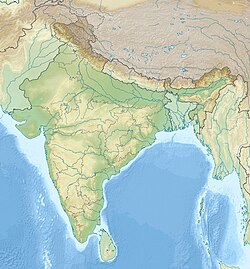| Kota Formation | |
|---|---|
| Stratigraphic range: Jurassic ~ | |
| Type | Geological formation |
| Sub-units | Lower & Upper members |
| Underlies | Unconformity with the Gangapur Formation and Chikiala Formation |
| Overlies | Dharmaram Formation |
| Thickness | 550–600 m (1,800–1,970 ft) |
| Lithology | |
| Primary | Mudstone, sandstone |
| Other | Limestone |
| Location | |
| Coordinates | 18°54′N 80°00′E / 18.9°N 80.0°E |
| Approximate paleocoordinates | 31°36′S 31°54′E / 31.6°S 31.9°E |
| Region | Telangana |
| Country | |
| Extent | Pranhita-Godavari Basin |
| Type section | |
| Named for | Kota Village |
The Kota Formation is a geological formation in India. The age of the Kota Formation is uncertain; it is commonly considered to date to the Early Jurassic, but some studies have suggested it may extend into the Middle Jurassic or even later. It conformably overlies the Lower Jurassic Upper Dharmaram Formation and is unconformably overlain by the Lower Cretaceous Gangapur Formation. It is split into a Lower Member and Upper Member. The Lower Member is approximately 100 m thick while the Upper Member is 490 m thick. Both subunits primarily consist of mudstone and sandstone, but near the base of the upper unit there is a 20-30 metre thick succession of limestone deposited in a freshwater setting.[1]
- ^ Goswami, Suparna; Gierlowski-Kordesch, Elizabeth; Ghosh, Parthasarathi (January 2018). "Sedimentology of the Early Jurassic limestone beds of the Kota Formation: record of carbonate wetlands in a continental rift basin of India". Journal of Paleolimnology. 59 (1): 21–38. Bibcode:2018JPall..59...21G. doi:10.1007/s10933-016-9918-y. ISSN 0921-2728. S2CID 133167210.

